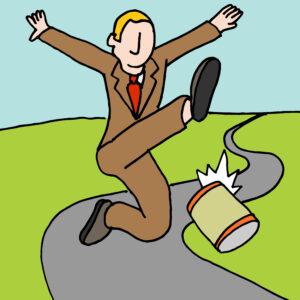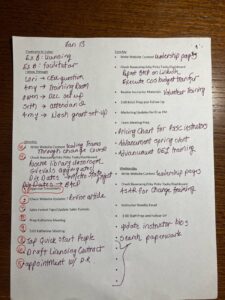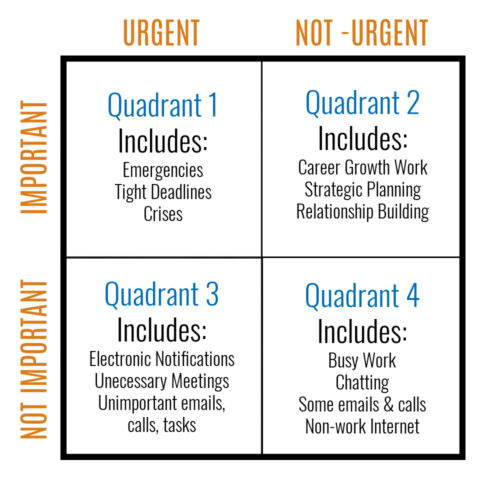Stuck in the Middle? | Middle Management Blog
Stuck In the Middle
Hello, My name is Beth Schaefer, and I am in middle management.
This may not seem like a terrible admission, but… for those of us who find our passion in middle management, we can also find ourselves on the receiving end of sideways glances and whispers…
- What is wrong with her? She has been in that same role for 10 years!
- Why haven’t they been promoted?
- I thought he was going to apply for the next level once his kids were in school, but he still hasn’t made a move.
- Why would anyone want to stay in that job instead of going for more money?
I cannot answer that last question for everyone, but for me, I like the combination of leading and mentoring still mixed with project work and task completion alongside regular communication and relationships with the people who benefit from our products and services.
And, I believe, there are others like me.
For those of us in the American Middle Management role who say, I like what I do. I do not want to be constantly pursuing the next level, there is a danger of being labeled a “slacker” or an underachiever. Middle Management is often viewed as a bridge from beginning supervision to Leadership. It is not considered a career goal; it is seen as a means to an end. So, when I, and others like me, make no attempt to apply for the next rung on the ladder, it raises eyebrows… and suspicions.
The question Stuck in the Middle? is not self-help to move out of middle management, but rather questions if we need to see being in Middle Management as being stuck at all.
I say Nay. (Cue your own patriotic or inspirational music here).
I say it is time for Middle Managers to stand proud and be respected. Because, frankly, we are important to our organizations, and we navigate really difficult and complex situations that benefit the organizations we work for. This past week, I have mentioned this topic and the challenges I believe middle managers face to my neighbor and walking partner, my bar trivia partner, my friend who is a high school department chair, and one of my IPD instructors. They each gave me additional challenges they thought should be addressed based on their personal experiences with managing in the middle! It seems the complexities of middle management are a shared experience – as I suspected (based on this small anecdotal sampling).
This series, Stuck in the Middle? will focus on the specific dilemmas faced by middle management with strategies to navigate them and will wrap up with what upper management can do to support the essential work of middle managers.
When will this series wrap up? Who knows? It depends on how many more middle management challenges pour in.
And Kudos to all you middle managers out there. You have my respect.















